The Troia Peninsula is a very important place on the tourist map of Portugal today. It is located in the county of Grândola, right next to the mouth of the Sado River to the Atlantic Ocean. It is characterized by long, sandy beaches, a marina filled with yachts, a unique harbor built on wooden stilts, as well as magnificent monuments of the period of the Roman Empire. It can be reached by ferry departing from the port city of Setúbal, which is only fifty kilometers from Lisbon. This makes it an ideal destination for Portuguese and foreign tourists seeking a break from the hustle and bustle of the city, looking for a unique visual experience.

Troia is a unique resort on the map of Portugal. One of the few refined and dedicated places for tourists
How to get to the Troia peninsula?
Troia can be reached by ferry from Setubal or by car by going around the peninsula. The catamaran heading to the marina in Troia departs from Pier 3. The fare is 7.20 Euros round trip. The stop is about a 15-minute walk from the Setubal train station (4 Euro Uber/Bolt) and 10 minutes from the bus station, which you have to get to from Lisbon. Ferries depart every equal hour. I recommend taking food and drinks with you – the gastronomic offer of the peninsula is very poor.

Setubal can be reached from Lisbon by commuter train. Trains leave from Roma-Areeiro station in Lisbon and pass through Entrecampos, Sete-Rios and Campolide stations. The ticket price is €4.50 (+ making a Viva Viagem card €0.50 if you don’t have one). Note that the 24-hour ticket on the Viagem card does not entitle you to use the Fertagus line to Setubal. Check the train schedule at cp.pt.
Setubal can also be reached by bus from TST (Transportes Sul do Tejo). Buses to Setubal leave from Praça de Espanha (line 561) and Gare do Oriente (562). As always, I recommend checking schedules at moovit.com
Beaches on the Troia peninsula

If you are planning a vacation away from the hustle with soaking in a hotel – Troia is the best place near Lisbon
Are you bored with Portugal’s dingy houses and cracked azulejos? Trash strewn across the streets, uneven cobblestones and accosting “salesmen” pushing another pair of fluorsten glasses for 2 euros? Or do you just want soft sand, warmer water and sunshine? Troia, with its nearly 13 kilometers of coastline, is an excellent choice!
Troia Mar beach
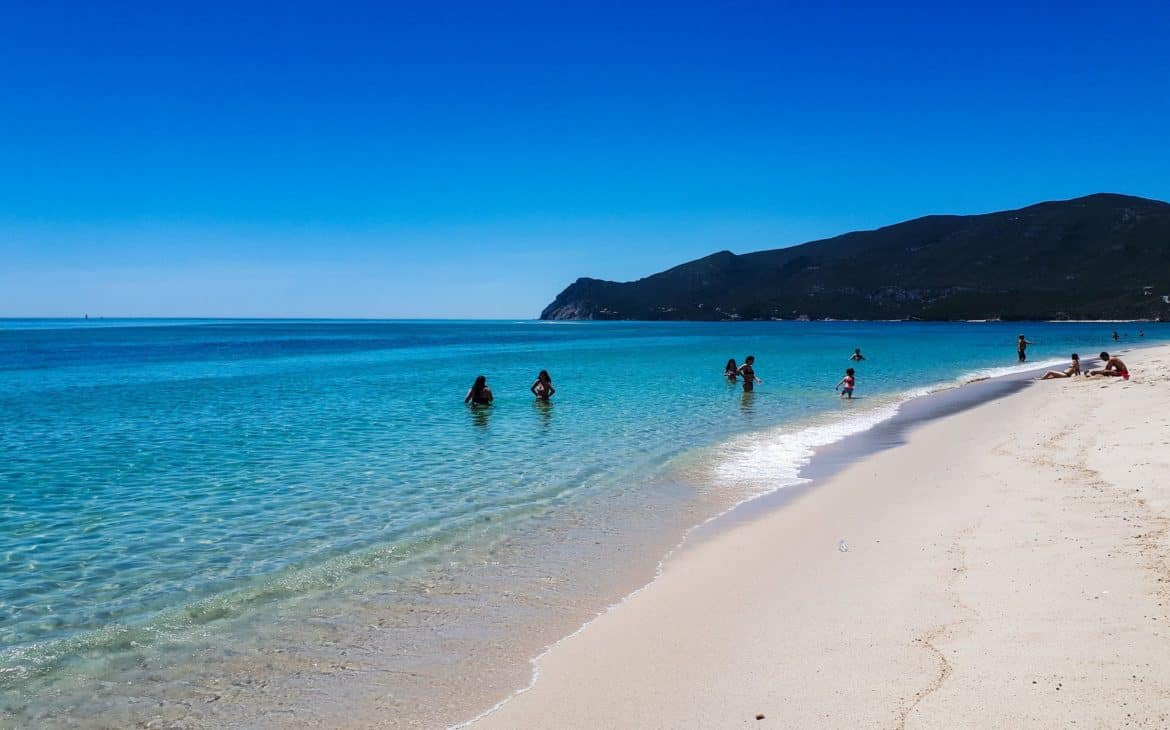
Troia Mar is the most besieged beach on the Troia peninsula. All because of its location – it is right next to the harbor. You will find a bar serving drinks and sandwiches on it – I strongly advise against dining there due to the high prices and low quality. While beachcombing on Troia beach, you can go to the restaurant at the Aqualuz Hotel.
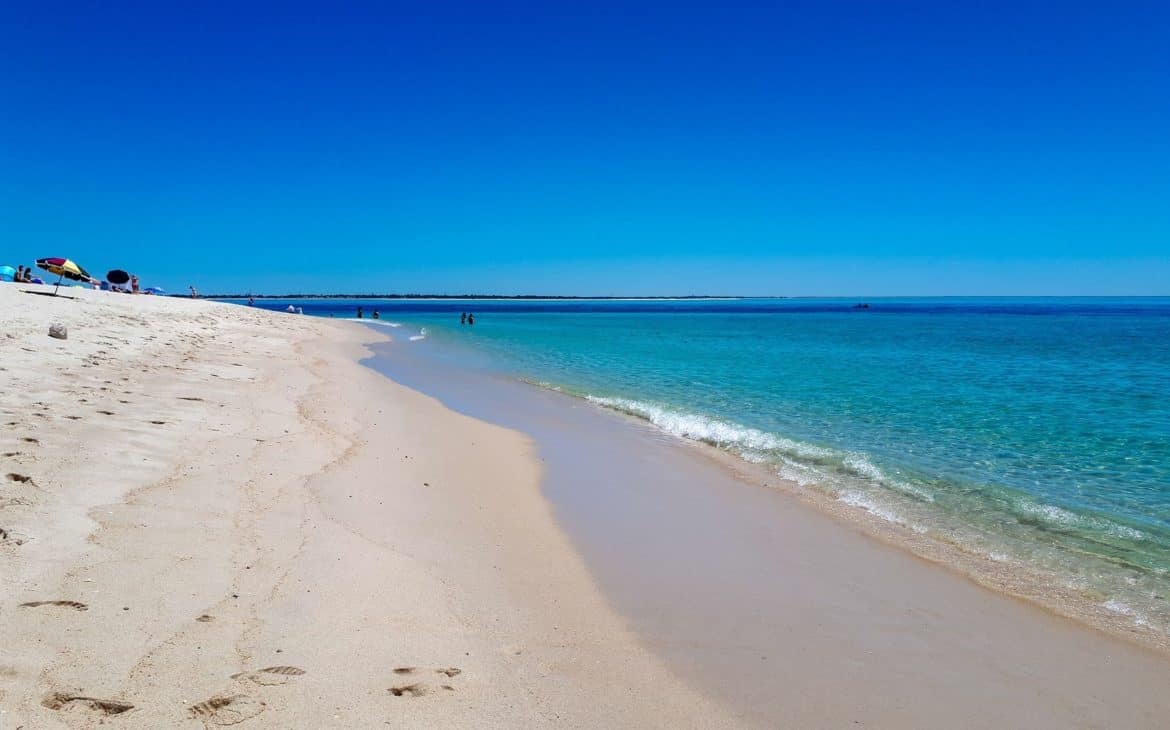
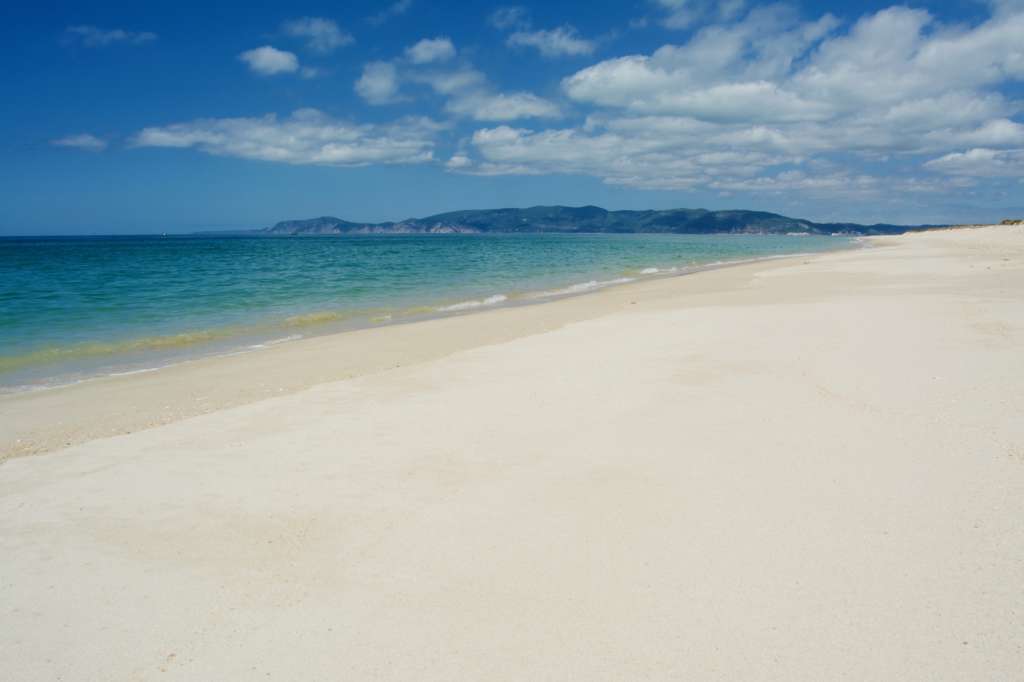
Bico da Lulas beach
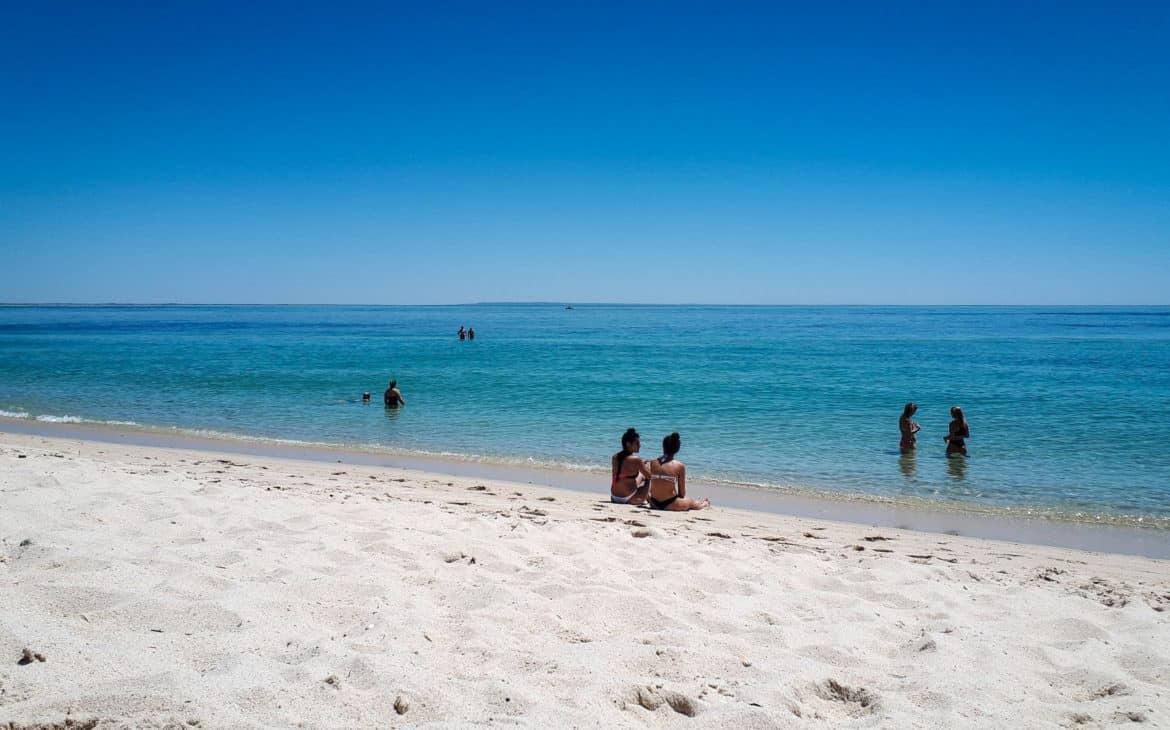

In my opinion, the best beach on Troia. It looks prettiest at low tide, when the water covers part of the beach, and you can still get to it over the dunes. Bico da Lulas can be reached directly from the town, via a road on a wooden platform. The route looks especially nice in May, when the desert is covered with flowers. You can find the passage here. To reach the wooden platform from Bico da Lulas, you need to go a little deeper into town, the passage is right next to the Aqualuz Hotel and opposite the soccer field.
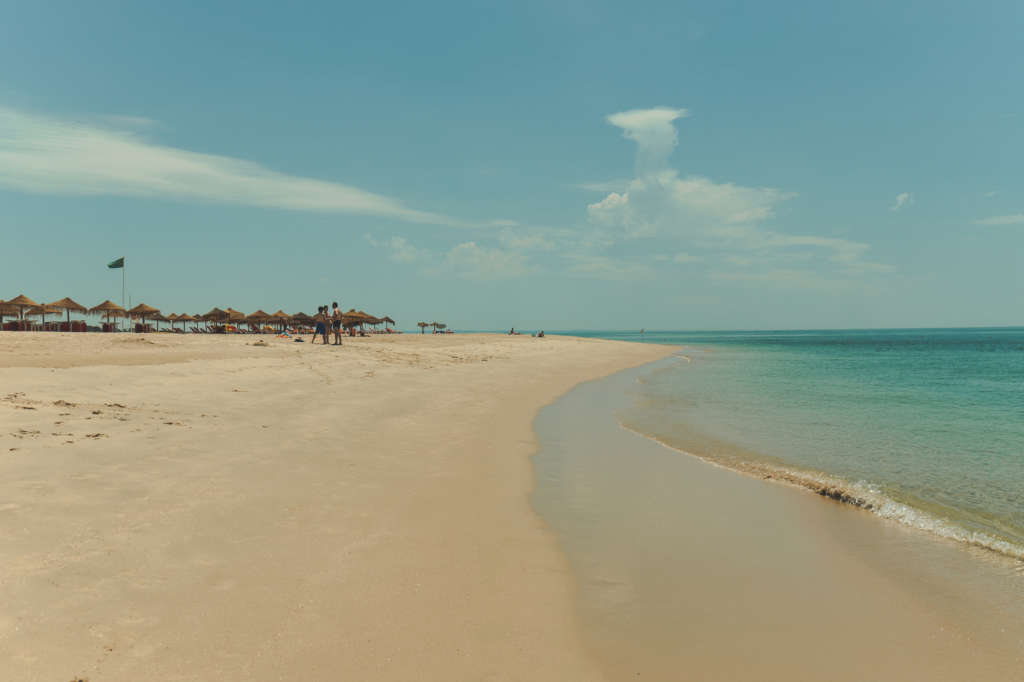
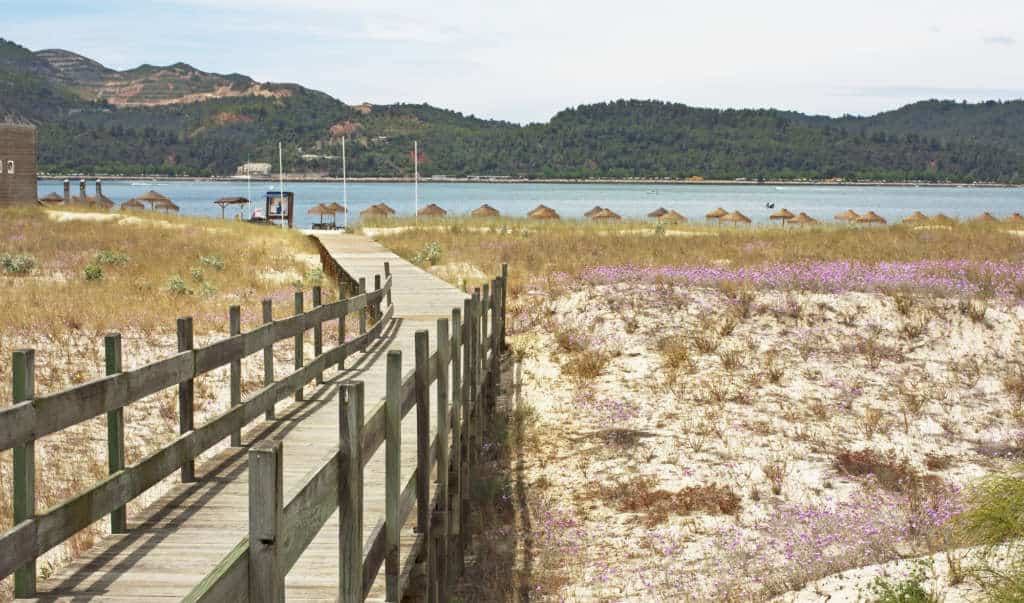
Other
I could list virtually every beach from the coastline located on the ocean side. In fact, I recommend picking one and walking towards the south.
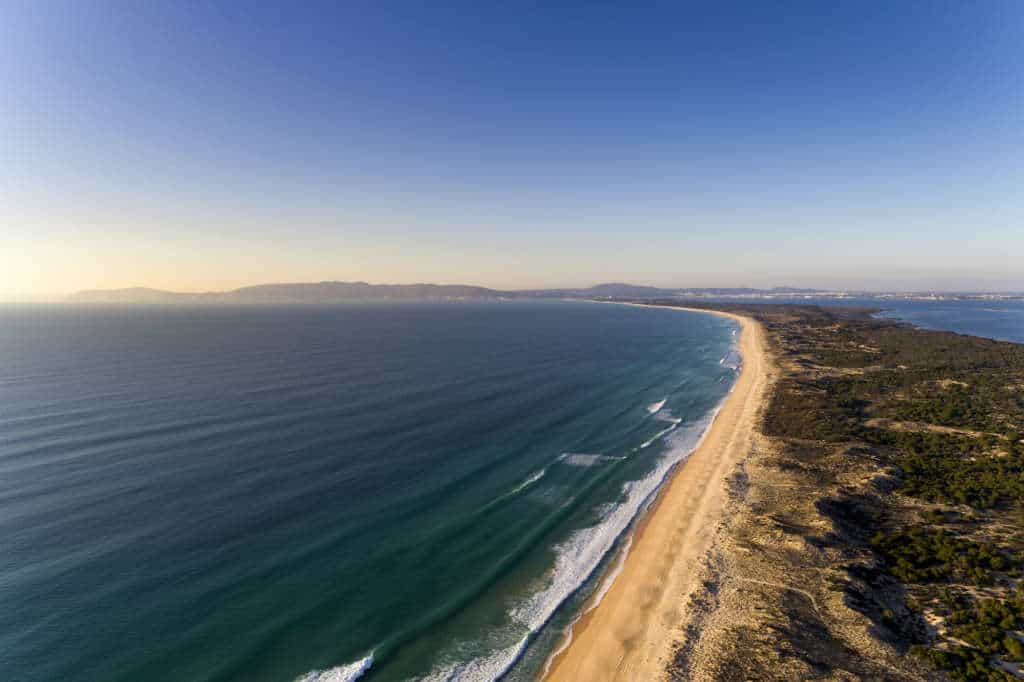
The coastline on Troia is several kilometers long. Here, a drone view from Comporta beach toward Lisbon.
Troia peninsula – history
The history of settlement on the peninsula dates back to antiquity, when Roman settlements called Cetóbriga were built on the site of today’s cultural center of Setúbal, or Troia, located nearby. At the time, the area was famous for its aromatic fish, which were caught and then processed in vats. The availability of meat, as well as salt, allowed the inhabitants of these marshy areas to carry out the production of a sauce called “garum.” It was a very salty, intensely fragrant product of open-air fermentation of the raw material, arousing the desire and admiration of ancient court cooks. After the end of the reign of the Apennine and later African superiors, the buildings on the promontory were mostly forgotten. The peninsula itself was virtually uninhabited until the 20th century, when exclusive resorts were built on the shore. For hundreds of years the place depicted remained untouched, even wild, unexplored.
Roman ruins at Troia
The ruins are located on a separate part of Troia, which means they are divided by a bay that must be circumnavigated by a seven-kilometer idyllic road to get to their site. The archaeological site was first identified by archaeologist António Inácio Marques da Costa in 1907. The question of the site’s description from that time remains a mystery, as only isolated fragments of the explorer’s journal have survived. It was not until eighty years later that the first professional excavations were carried out under the aegis of the Museu de Arqueologia e Etnografia do Distrito de Setúbal, led by Carlos Tavares da Silva.
The findings suggested to researchers that the site was characterized by three phases of settlement. The first phase took place around the third quarter of the first century AD. During this era, most of the structures preserved in the form of foundations to the present day were built, such as nine tanks for fish salting and processing, warehouses, the owner’s house, possible housing for workers, Roman baths heated by means of a hypocaustum system (a wood oven in the basement heated the air, which rose, then raised the temperature of the floor of the main hall and caldarium rooms). It is surprising to find containers probably for ice in a place called the frigidarium.
The findings suggested to researchers that the site was characterized by three phases of settlement. The first phase took place around the third quarter of the first century AD. During this era, most of the structures preserved in the form of foundations to the present day were built, such as nine tanks for fish salting and processing, warehouses, the owner’s house, possible housing for workers, Roman baths heated by means of a hypocaustum system (a wood oven in the basement heated the air, which rose, then raised the temperature of the floor of the main hall and caldarium rooms). It is surprising to find containers probably for ice in a place called the frigidarium.
